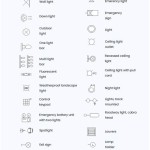How to Make Liquid Fertilizer for Houseplants in Pots: A German Perspective
Maintaining the health and vitality of houseplants in pots within German households requires careful attention to nutrient provision. While commercially produced fertilizers are readily available, homemade liquid fertilizers offer an economical and environmentally conscious alternative. This article explores several methods for creating liquid fertilizer suitable for houseplants grown in pots, focusing on readily accessible materials and environmentally sound practices relevant to the German context. Understanding the nutrient needs of various houseplants is crucial before applying any fertilizer, homemade or commercial. Different plant species have different requirements for nitrogen (N), phosphorus (P), and potassium (K), the primary macronutrients, as well as micronutrients like iron, magnesium, and calcium.
Over-fertilization can be detrimental, leading to salt buildup in the soil, root burn, and ultimately, plant damage. Observe plants closely for signs of nutrient deficiency (e.g., yellowing leaves, stunted growth) or excess (e.g., rapid, weak growth, burnt leaf tips) to adjust fertilizer application accordingly. It's also crucial to consider the type of potting soil used. Most commercially available potting mixes contain a slow-release fertilizer, which will gradually release nutrients over several months. Therefore, the need for supplementary fertilization might be reduced initially. Regular repotting with fresh potting mix also helps replenish nutrients.
Compost Tea: Harnessing the Power of Decomposition
Compost tea is a valuable liquid fertilizer derived from the beneficial microbes and nutrients present in compost. It is a gentle and readily absorbed source of nutrients for plants. The production of compost tea in Germany aligns well with the country's emphasis on waste reduction and sustainable gardening practices. To make compost tea, high-quality, well-decomposed compost is required. Avoid using compost containing diseased plant material or meat/dairy products. The ideal compost should be dark in color, crumbly in texture, and have an earthy aroma.
The brewing process involves steeping the compost in water. A common ratio is 1 part compost to 5-10 parts water. Non-chlorinated water is essential; tap water should be left to sit for 24 hours to allow chlorine to dissipate. Place the compost in a porous bag, such as cheesecloth or an old pillowcase, and submerge it in a container of water. Aeration is crucial for promoting the growth of beneficial aerobic bacteria. This can be achieved by using an aquarium air pump and air stone, placed at the bottom of the container.
The brewing process typically lasts for 24-48 hours. The tea is ready when it has a dark, earthy color and a slightly sweet smell. After brewing, strain the compost tea through a fine mesh strainer or cheesecloth to remove solid particles. The resulting liquid can be diluted further with water before use. A common dilution ratio is 1 part compost tea to 5-10 parts water. Apply the diluted compost tea directly to the soil around the base of the plant. It can also be used as a foliar spray, applied to the leaves to provide nutrients and enhance plant health. Compost tea is most effective when used fresh, as the beneficial microbes will gradually die off over time. Use within a few hours of brewing for optimal results.
Furthermore, the specifics of composting in Germany are influenced by local regulations and practices. Many households participate in organic waste collection programs ("Biotonne"), providing a consistent supply of compostable materials. Utilizing this compost for making compost tea aligns with the principles of circular economy and resource conservation prevalent in the German environmental consciousness.
Banana Peel Fertilizer: A Potassium Boost
Banana peels are a rich source of potassium, a crucial nutrient for plant flowering, fruiting, and overall health. Utilizing banana peels as fertilizer is a simple way to reduce food waste and provide plants with a natural potassium boost. This method is particularly valuable for plants that require high levels of potassium, such as flowering plants and those grown for their fruits, like tomatoes and peppers (though these are generally not grown indoors in pots, the principle applies to potassium-loving houseplants).
There are several methods for preparing banana peel fertilizer. One approach is to bury the banana peels directly in the soil around the base of the plant. As the peels decompose, they release potassium and other nutrients into the soil. However, this method can attract fruit flies, especially in indoor environments. A more controlled and less messy approach is to create banana peel water. To do this, place several banana peels in a jar or container and fill it with water. Let the mixture sit for 1-2 weeks, allowing the potassium and other nutrients to leach into the water.
The resulting banana peel water can then be used to water plants. Dilute the solution with water before use, typically at a ratio of 1 part banana peel water to 5-10 parts water. Another method involves drying the banana peels. Dry the peels in the sun or in a low-temperature oven until they are completely dry and brittle. Once dry, grind the peels into a powder using a blender or coffee grinder. The resulting banana peel powder can be added directly to the soil around the base of the plant or sprinkled into the planting hole when repotting. The powder can also be steeped in water to create a liquid fertilizer.
The German emphasis on environmental awareness encourages responsible waste management practices. Utilizing banana peels for fertilizer is a practical way to reduce organic waste and minimize the need for commercially produced fertilizers. Many German households compost their kitchen scraps, but even those without compost bins can easily utilize banana peels in this manner. The simplicity of the method and the readily available source material make banana peel fertilizer a popular choice for environmentally conscious gardeners in Germany.
Eggshell Fertilizer: Calcium and Alkalinity
Eggshells are a readily available source of calcium carbonate, a compound that can help improve soil structure and provide plants with essential calcium. Calcium is crucial for cell wall development, nutrient uptake, and overall plant health. Eggshell fertilizer can also help raise the pH of acidic soils, making it particularly beneficial for plants that prefer slightly alkaline conditions. This is especially relevant in regions of Germany with acidic soil conditions.
Preparing eggshell fertilizer is a straightforward process. First, thoroughly rinse the eggshells to remove any remaining egg white. This helps prevent odors and discourages pests. Allow the eggshells to dry completely. Once dry, crush the eggshells into small pieces. This can be done manually or using a blender or coffee grinder to create a finer powder. The finer the powder, the more readily the calcium will be available to the plants.
The crushed or powdered eggshells can be added directly to the soil around the base of the plant. Gently work the eggshells into the top layer of soil. Alternatively, the eggshells can be added to the planting hole when repotting. For a liquid fertilizer, steep the crushed eggshells in water. Place the crushed eggshells in a jar or container and fill it with water. Let the mixture sit for several weeks, stirring occasionally. The calcium will gradually leach into the water, creating a calcium-rich liquid fertilizer. Dilute the resulting liquid with water before use, typically at a ratio of 1 part eggshell water to 5-10 parts water.
In Germany, recycling and waste reduction are heavily emphasized. Eggshells are often discarded as waste, but utilizing them as fertilizer is a practical way to reduce waste and provide plants with a valuable source of calcium. The widespread use of free-range eggs ("Freilandeier") in Germany means that eggshells are often of particularly high quality, containing a higher concentration of calcium. The combination of environmental awareness and the availability of high-quality eggshells makes eggshell fertilizer a viable and sustainable option for German gardeners.
Furthermore, it's important to note that the effectiveness of these homemade fertilizers depends on various factors, including the quality of the ingredients, the specific needs of the plants, and the existing soil conditions. Regular monitoring of plant health and soil pH is recommended to ensure that the fertilizer is providing the desired benefits without causing any adverse effects. In addition to these methods, other organic materials like coffee grounds (nitrogen source) and wood ash (potassium and phosphorus) can be used in moderation as soil amendments, reflecting the resourcefulness encouraged within the German tradition of home gardening.

How To Make Liquid Seaweed Fertilizer Fresh Dried

How To Fertilize Outdoor Potted Plants Containers Get Busy Gardening

How To Fertilize Outdoor Potted Plants Containers Get Busy Gardening

When How To Fertilize Indoor Houseplants

Houseplant Fertilizer Basics How And When To Feed Houseplants

Houseplant Fertilizer Basics How And When To Feed Houseplants

Houseplant Fertilizers The Best 10 Indoor Plant Reviews

When How To Fertilize Indoor Houseplants
Fertilizing Container Gardens How To Feed Potted Plants The Old Farmer S Almanac

Organic Indoor Plant Liquid Fertilizer 8 Oz House Plants Expert








